- All
- [Open Science Policies]
- Auvergne-Rhône-Alpes
- Bourgogne-Franche-Comté
- Brittany
- Centre-Val de Loire
- Corsica
- DROM-COM
- Grand Est
- Hauts-de-France
- Île-de-France
- Normandy
- Nouvelle-Aquitaine
- Occitania
- Pays de la Loire
- Provence-Alpes-Côte D'Azur
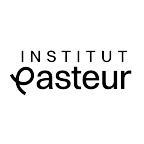
Institut Pasteur
It is home to several national (CNR) and international (CCOMS) centers of expertise that monitor infectious diseases. The Institut Pasteur Medical Center is a health center specialized in infectious and tropical diseases, travel medicine and allergic diseases.
The Education Center welcomes every year over 600 students (Master’s and PhD students, post-doctoral fellows, experienced researchers and health professionals). Some 250 PhD students are present in campus laboratories in any one year, making the Institut Pasteur a major stakeholder when it comes to training of young scientists through research.
HAL portal of the Institut Pasteur
HAL portal of the Pasteur Network
Open Science Policy
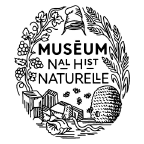
Muséum national d’Histoire naturelle (French National Natural History Museum)
Environmental awareness and protecting the planet lie at the heart of contemporary debates. The Muséum is fully committed to these issues and occupies a position of reference thanks to its varied missions, which include basic and applied research, conservation and the expansion of its collections, education, expertise and the dissemination of knowledge.
The Muséum is a research centre and draws on laboratory work and worldwide expeditions, a wide range of disciplines, outstanding collections and recognised expertise. Its mission is also to share knowledge, which it does through education and dissemination activities. With a clear objective – to make knowledge about the natural world accessible to everyone and to make as many people as possible aware of the importance of protecting our planet.
One of the Muséum’s distinctive features is that its activity is spread over 13 sites throughout France. Its historic heart is situated in Paris, at the Jardin des Plantes, where laboratories, exhibition galleries, a zoo and educational institutions can all be found. Two other key Parisian sites must also be mentioned – the Parc Zoologique de Paris and the Musée de l’Homme (re-opened in October 2015). The remaining sites to be discovered in all four corners of France include two marine stations, an arboretum, a zoo, botanical gardens, a prehistoric excavation site and laboratories.
This historic institution was created in 1635. Originally a royal garden for medicinal purposes and an educational institution, it became the Natural History Muséum in 1793. For four centuries, it has been the source of major scientific discoveries in natural sciences. It has developed over the years thanks to some great minds. Buffon in the 18th century and Daubenton, Lamarck, Geoffroy Saint-Hilaire and Cuvier in the 19th century all provided excellent teaching, extended and studied the collections and were deeply committed to sharing their knowledge with the public.
Today, many different professions exist side by side at the Muséum. Teacher-researchers hunting down knowledge to make scientific progress, taxidermists devoted to giving back power, movement and expression to specimens in the collections, gardeners rising to the challenge of growing plants from different climates in the alpine garden, electricians, carpenters, reception assistants, vets, museologists… all working with the same passion and with one single aim – to further explore and promote nature in order to protect it better.
HAL portal
Open Science Policy
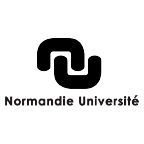
Normandy University
Normandy University is a group of universities, encompassing universities and higher education and research institutions from Normandy.
These institutions are:
- Caen Normandie university,
- Le Havre Normandie university,
- Rouen Normandie university,
- ENSICAEN,
- INSA Rouen Normandie,
- ENSA Normandie,
- CESI,
- ESIGELEC,
- UniLaSalle,
- Ésam Caen/Cherbourg,
- ESADHaR,
- EM Normandie Business School,
- NEOMA Business School,
- Caen University Hospital,
- Rouen University Hospital,
- Centre François Baclesse,
- CROUS Normandie, and
- GIP Labéo
HAL portal
Open science policy

Sciences Po
Sciences Po stands out for combining approaches and confronting different worldviews. This tradition of diversity and multidisciplinary approach makes Sciences Po an active participant in public debate, a forum where thought meets action.
At Sciences Po, the finest researchers in the social sciences engage in continual dialogue with the greatest practitioners. With an academic community of more than 4,000 academics including 2,400 practitioners, the knowledge we transmit to students is nurtured by innovative research and rooted in reality.
HAL Portal
Open Science Policy
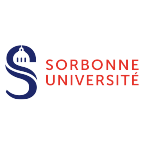
Sorbonne University
HAL Portal
Committment to Open Science
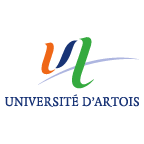
Artois University
Artois University is spread over several medium-sized towns of the Nord-Pas-de-Calais region and is composed of 8 Faculties, 2 University Institutes of Technology (IUT), a Further Education Department and 15 Research Centres.
Since its beginnings in 1992, Artois University has established itself as a major contributor to social mobility and has fostered a welcoming and stimulating environment favorable to both study and culture.
HAL portal
Open science policy

Bordeaux Montaigne University
Bordeaux Montaigne University brings together more than 14 000 students and 1 300 teaching and administrative staff, for study and research in the arts, languages, literatures and human and social sciences.
As a laboratory for ideas, and an intellectual hotbed, Bordeaux Montaigne University contributes meaningfully to the scientific debates of its day and works tirelessly to cultivate and nurture its fundamental values: independence, and freedom of thought. The university considers equality of opportunities to be one of its priority missions, and works permanently to perfect the courses it offers, and to support and guide its students towards success.
Now so more than ever before, Bordeaux Montaigne University seeks to follow in the path of Michel de Montaigne, continuing to offer a university model that is distinctly human in its scope and appearance. In accordance with the values that have characterised it since its very establishment, the university seeks to be: humanist, exploratory, polyglot, civic-minded, creative and digitally connected.
Read more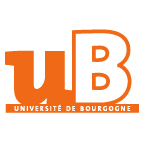
University of Burgundy
University of Burgundy fulfils a dual mission of education and research in all scientific fields.
Located in Burgundy between Paris and Lyon, the city of Dijon is home to uB’s main campus, with several others spread across the region.
It offers 400 different degrees across all levels (Bachelor, Master, and PhD), employs 3,000 staff members, and enrols 34,000 students, among whom more than 2,900 are international.
There are 27 Research Units divided into 6 main research fields :
- Food and Environment
- Health and Molecular Engineering
- Photonics and Advanced Materials
- Learning and Care
- Heritage and Territories
- Vine and Wine
HAL portal
Open Science Policy

Université Côte d’Azur
Université Côte d’Azur has been an experimental university since 1 January 2020 replacing both the Université Nice Sophia Antipolis created in 1965 and the Communauté d’Universités et d’Etablissements Université Côte d’Azur created in 2015.
Université Côte d’Azur now includes 17 major academic establishments around the historic university core to create one of France’s top 10 research-intensive universities.
Since 1 January 2020, Université Côte d’Azur has been officially recognized as an experimental university. This new academic status helps develop a bold and independent strategy based on:
- breaking down the barriers between education, research and innovation,
- developing agility and responsiveness through the increased autonomy of the units,
- the ability to harness the amazing potential for diversity represented by its 17 members.
It is based in particular on setting up University Research Schools and giving them this essential role of redesigning university architecture. It also accelerates the implementation of a “Bac-3/Bac+3” principle aimed at effectively combating failure at schools and universities. Finally, it opens up the field of possibilities on the density and diversity of public-private partnerships and on the university’s overall funding model.
HAL portal
Open Science Policy
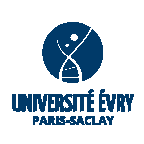
Université Évry Val Paris-Saclay
Université d’Évry is one of 4 new universities created during the 1990’s in Île-de-France.
It strives to rise to challenges through research, and to share new knowledge in order to prepare the youth for upcoming challenges.
Université d’Évry offers education in most fields, except for health studies, from bachelor to doctorate degrees. It also proposes professional education related to the socio-economic environment: the university ends up with the highest number of higher education apprentices in France.
Université d’Évry is a part of Université Paris-Saclay, as an associated member. This group of universities also comprises UVSQ (Université de Versailles Saint-Quentin-en-Yvelines), 4 Grandes Écoles, the Institut des Hautes Études Scientifiques, and 6 national research organisations. It aims to construct a world-class intensive research university, with 15% of French research, and to give access to higher education to the masses. Most diplomas delivered by Université d’Évry are now labelled “Université Paris-Saclay”.
HAL portal
Open Science Policy
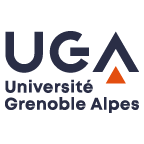
Université Grenoble Alpes
Anchored on its territory, multidisciplinary and open to the international, Université Grenoble Alpes brings together the main public higher education institutions of Grenoble and Valence. In association with the national research organizations and the international research facilities present on its territory, it builds its innovation policy on a global scale. As a driving force for progress and a laboratory for initiatives, it collaborates with its many partners to accompany the evolution of society.
HAL Portal
Open Science Policy
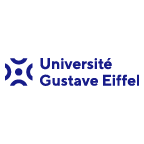
Université Gustave Eiffel
Université Gustave Eiffel is a multidisciplinary university of national importance. It also has the distinction of being the first institution to bring together a research institute, a university, a school of architecture and three engineering schools. By pooling its many strengths in the areas of education and research, Université Gustave Eiffel aims to develop by pursuing a strategy based on complementarity between its founding institutions. By creating better synergies in this way, the university can offer the groups it serves a wider range of expertise. Educating young people, employees or citizens at all levels, providing the whole of society with scientific insights ̶ the ultimate aim of Université Gustave Eiffel is to help raise everyone’s level of qualification.
Université Gustave Eiffel is active in many areas of research. In particular, it accounts for a quarter of French research on the cities of tomorrow and brings together multidisciplinary capabilities to conduct quality research for the benefit of society, offer education tailored to the social and economic world and support public policies.The institution’s main remits are:
- Initial and in-service education, with a strong focus on apprenticeship education.
- Research (fundamental and applied) and innovation.
- Expert appraisals, public policy support and standardisation.
- Openness to society and international cooperation.
HAL portal
Open Science policy
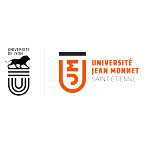
Jean Monnet University
It stands out as an institution of higher education and essential research in the Lyon Saint- Étienne metropolitan area thanks to its emphasis on partnerships with the higher education institutions of Saint-Étienne and Lyon, the City and the Metropolitan Area, and also with businesses.
A multidisciplinary university offering health courses, UJM is present throughout the city of Saint-Étienne: with its 20,000 students, Jean Monnet University supplies young talent and excellence to its 5 campuses and the local area.
UJM also shines internationally. Its attractiveness lies in a course offering in line with its economic, cultural and social ecosystem and open to the world, with quality classes taught in English, and distance learning courses abroad using digital technology.
Its multidisciplinary education offering allows students to access a diploma in 5 major areas of education: Arts, Letters, Languages/Humanities and Social Sciences/Law, Economics, Management/Science, Technology/Health.
With over 400 international cooperation agreements, UJM promotes openness and knowledge-sharing with a network of partners throughout the world. Moreover, it contributes to developing the Transform4Europe (T4EU) initiative in order to offer inward and outward intra-European mobility to students and its teaching and administrative staff.
HAL portal
Open Science policy
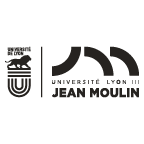
Jean Moulin Lyon 3 University
Located in the centre of Lyon – a UNESCO World Heritage Site and the second largest university town in France – and in Bourg-en-Bresse (Ain), Jean Moulin Lyon 3 University offers a learning and research space focused on the humanities and social sciences with programmes ranging from two-year foundation degrees to PhDs (Bac +2 to Bac +8). With seven doctoral schools and 19 research units, the University develops interdisciplinary research linked to major social issues.
A member of the University of Lyon – Community of Universities and Institutions (COMUE) – it welcomes more than 29,000 students and offers a wide range of career-oriented programmes within a high-quality learning framework conducive to intellectual and personal development.
HAL portal
Open Science policy
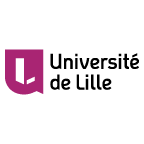
University of Lille
The University of Lille occupies a strategic position at the heart of Northern Europe. It boasts an outstanding cultural and scientific heritage that is etched into the Hauts-de-France Region’s history, and has established itself as a key player in the region for training, research and innovation, and commitment to social issues.
Portail HAL
Open Science Policy

Université de Lorraine
HAL Portal
Open Science policy
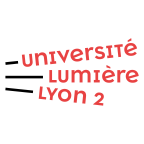
Université Lumière Lyon 2
Since its creation in 1973, the Université Lumière Lyon 2 has been committed to a strong and demanding vision of Higher Education and Research, driven by a spirit and values that are also its trademark: human and humanistic, committed and supportive, democratic and civic-minded.
A founding member of the aggregation of universities and higher education institutions known as the COMUE Université de Lyon, the Université Lumière Lyon 2 welcomes nearly 30,000 students on two campuses to its bachelor’s, master’s, and doctoral degrees.
With a varied range of training courses, the Université Lumière Lyon 2 combines openness and success in order to empower its students to actively develop their critical thinking skills in a multidisciplinary context in order to be able to address the societal challenges of the future.
Its thirteen faculties and institutes offer a wide range of courses in four areas of education and research: Arts, Literature, Languages / Law, Economics, Management / Humanities and Social Sciences / Sciences, Technology, Health.
Covering a very broad spectrum of disciplines in the Human and Social Sciences, the Université Lumière Lyon 2 is developing cutting-edge research in each of its fields. Sensitive to the concerns and issues of society such as gender, education, work, the city, disability, it participates fully in social progress through its research programs and numerous actions to disseminate knowledge.
With thirty-two laboratories and eight research federations, covering the fields of Letters – Languages – Human and Social Sciences, the Université Lumière Lyon 2 is committed to innovation, interdisciplinarity, partnership and international openness. Through the projects developed and carried out by its 936 professors and researchers, it promotes dialogue between the human and social sciences and the hard sciences, and places research at the heart of contemporary scientific and societal issues.
HAL portal
Open Science policy
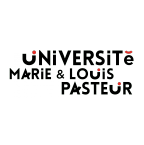
Université Marie & Louis Pasteur
If we count the trainees, the University of Franche-Comté has nearly 30,000 learners, of which 21.07% are international (130 nationalities are represented). The actual students are 24,670.
More than half (57%) of these students are female students and almost a third are higher education scholarship holders.
The University of Franche-Comté also has 1,289 teachers, including 775 teacher-researchers and university hospital teachers, 272 secondary school teachers and 242 contractors, 1,095 BIATSS staff and 2,300 external contributors.
HAL portal
Open Science Policy
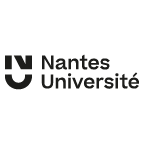
Nantes Université
Nantes Université is a higher education and research institute that offers a unique, globally-ranked university model in France. It brings together a university organised into faculties, three ‘grandes écoles’ (Centrale Nantes, École des Beaux-Arts Nantes Saint-Nazaire, and École Nationale Supérieure d’Architecture de Nantes), a university hospital (CHU de Nantes), a technological research institute (IRT Jules Verne), and a national research body (Inserm).
By pooling together their strengths, these key players aim to develop areas of excellence in Nantes research, in particular to design and build the future of healthcare and industries. They provide new training opportunities for students by breaking down the barriers between ways of thinking, cultures, and practices. Nantes Université is a sustainable institution committed to and involved in the evolution of society. It fosters a unique approach to promote open science, open education and open innovation.
HAL portal
Open Science Policy

University of Orléans
The University of Orléans is characterised by its multi-disciplinarity.
The university has 3 faculties, 1 engineering university school (Polytech), 4 University Institutes of Technology (IUT), 1 Higher Schools for Professors and Educators (INSPE), 1 Observatory of the Sciences of the Universe (OSUC), 1 University school of physiotherapy (EUK).
Over 19,000 students, including over 2,000 foreign students, attend one of the university’s sites.
Every year its international focus gets stronger. Its capacity for innovation is reflected in the dynamism of the research it leads and in the technology transfers to regional, national and international companies.
The wide range of study programmes offered by the University, which includes many vocational courses, is developed with a strong connection with Research. Thanks to schemes to receive and help students and adults alike with their vocational integration, the University of Orléans is a key actor in territorial development.
HAL portal
Open Science Policy